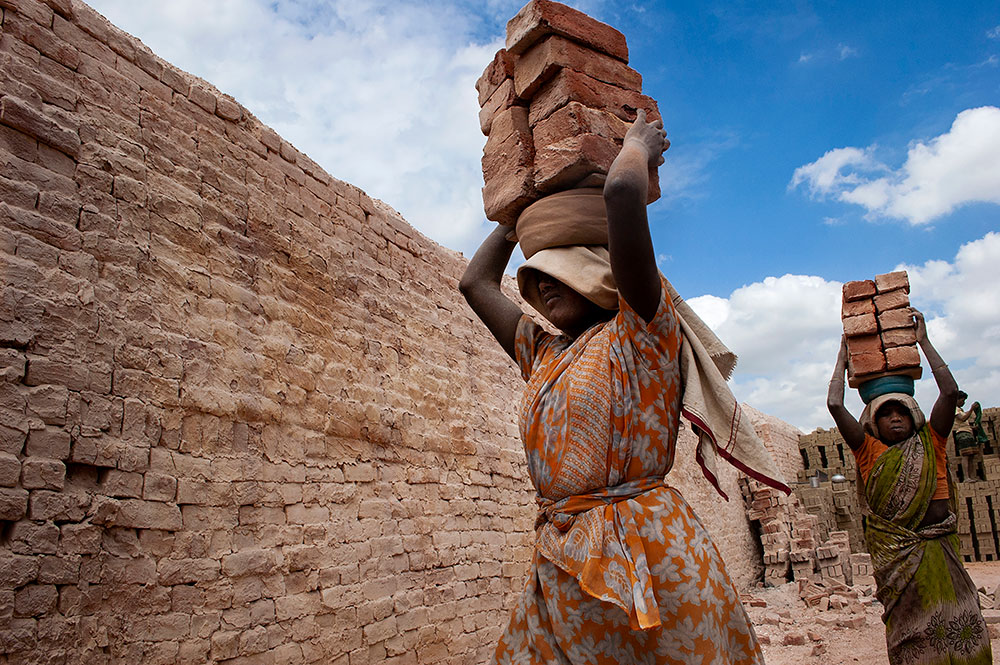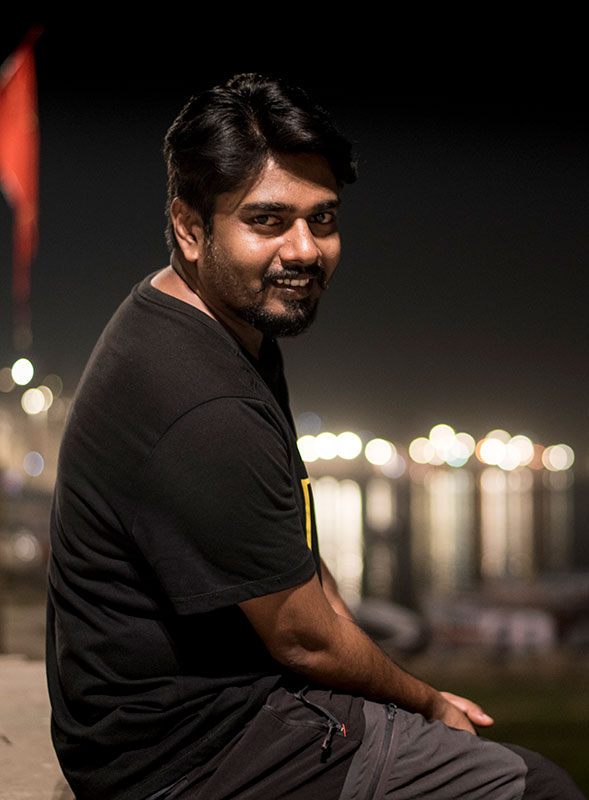RAJESH K. SINGH | Brick Klin Workers

“Their survival strenth comes from patience, faith, and the exceptions of the difficulties thrown by life at them.
In this series, the viewer can see their power to overcome these difficulties with decent work and dignity.”

I choose to make a statement to sensitize my audiences about the great privileges they have compared to a more extensive section of society and silent appeal at a subconscious level to arouse their feelings called “Sharing.” I feel privileged if my photographs manage to stir positive emotions towards these marginalized sections of society.
I try to say, their hidden stories, struggles, and efforts to live with an only available elixir of life called “faith.”
I chose brick kiln as a subject due to my earthy connection with the soil and cultural background, which equates the land as mother and ground as the nurturer of life.
Brick kilns being the general view of the Indian rural landscape had always been a part of my curious nature. I wanted to understand what tall chimneys, a primitive process of digging and carrying soil by little children on their heads, meant.
I wanted to know what was the final journey of this soil, which robbed small children of their childhood, delicate women of their femininity, animals of their sturdiness, before building a HOME for somebody.
It was a heartbreaking revelation to know that most of the brick kiln workers died at an early age due to lung-related illnesses as an occupational hazard.

I found that it was a journey undertaken by the soil to become a brick, to build a home, consecrated by the people who were ironically HOMELESS, themselves. It was a journey of human helplessness, which brought migrant villagers in search of a better future and getting enslaved by the very destiny they wanted to change.
Varanasi, the name, rings a plethora of nostalgia and memories of my youth, which I spent as a Banaras Hindu University student. There couldn’t have been a better place for me than Varanasi during my Formative years as a student of Photography.
Varanasi gave me the insight, perspective, and a future to follow my passion for Photography by an intuitive twist of fate. The twist of fate remains an inexplicable mystery to myself to this day, as I chose to study Photography in Banaras despite my family’s stiff opposition. I do not know what drove me towards this city despite never having visited the city ever. Still, the desire was so strong that I chose to be somewhat disowned by the family to defy their choice and decide to pursue my studies in Banaras.

Kasi, Banaras or Varanasi is the name of the same city, which has got changed over the annals of antiquity from ancient Vedic texts to Mughal to the Colonial rule. Strangely, it never lost its genuine fervor with the changing times and has retained its antique charm alongside the compulsions of Modernity by some mysterious reasons. The tools may have changed, but the means remain the same. It is a mystery city that remains juxtaposed in more than 4000 years of ancient existence and current Modernity. It has shown the will to accommodate change’s constants and yet retained its ancient culture to reemerge into a famous Hindu Pilgrimage Centre.
It has inspired many & shall continue to do so to many time travelers like me.
My inspiration to photograph the ‘Brick kiln workers’ has somehow been inspired by the fact that when I learned that the remnants of present Varanasi were unearthed in the area known as Rajghat, pottery.
And artifacts dating back to 800 BC, suggesting evidence of ancient settlements in the area. The city offers something to everyone; otherwise, why would filmmakers like Richard Gardener choose to film their movies in Banaras.
I have tried to capture my imagination’s frailty over the stark reality of the brick kiln worker’s world.
I try to interpret my subjects’ faces with the façade that they put to brave the odds against them. They are usually being ignored, overlooked, underprivileged.
Their survival strenth comes from patience, faith, and the exceptions of the difficulties thrown by life at them.
In this series, the viewer can see their power to overcome these difficulties with decent work and dignity.

Rajesh Kumar Singh, one of the finest Indian photographers, known for his evocative black and white photograph, captures the cultures, beauty of human disability and time. Born in Bokaro Steel City, Jharkhand, this young talent attained his education from Banaras Hindu University. His initial works focus on the raw conduct of people living in Varanasi, one of the ancient living cities in the world. He uses Photography as a means to project the universe, a center of visual meditation.
He was awarded numerous international awards, including the All India Award, National Scholarship, Govt. of India, 10th All India Academic Award, and IWIF Award for the Second best photographer of India. He received the international awards in the same year in which he worked as the cinematographer for Baalema, a feature film, Asst. Director -Feast of Varanasi (Indo-British Film), Associate Director “Addha Chand Tum Rakkh Lo”, And his name is registered in Limca book of record for his Image “The Kill.”
Rajesh’s works have been featured in major Photography Magazines, including BETTER PHOTOGRAPHY and Leaders Speak Magazine.

Rajesh Kumar Singh’s work has been featured in numerous exhibitions, including at the 56th National Exhibition of Art, Govt. of India, Ministry of Culture, the 8th Biennale of Photography (POLAND), Human Rights Art exhibition, in Canada, the South Taxes University, United States, CRAF (Centro di Ricerca e Archivazone Della Fotografia), Spilimbergo, Italy, Human Rights Exhibition, State Community College, Oregon US. KOREAN PASSION MEETS INDIA, Korea- India Contemporary Art Exchange Exhibition, Korean Culture Center, INDIA.
Most prestigious “Lens Culture Award photography” (Single image visual storytelling award), Wellcomephotoproze 2020, which will be exhibited at the world-renowned Aperture Gallery, New York.
Rajesh’s work is in prestigious collection at the National Taiwan Museum of Fine Art, Taiwan. Permanent Collection, CRAF (Centro di Ricerca e Archivazone Della Fotografia), Spilimbergo, Italy. MoCP, Permanent Collection, Museum of Contemporary Photography, Chicago.

